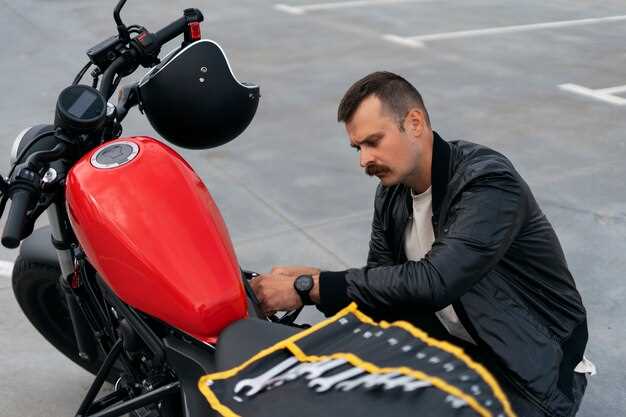
Venturing into the world of motorcycles is an exhilarating experience for any new buyer. However, the process of selecting the right motorcycle can be daunting for beginners. With various models, styles, and specifications to consider, having a comprehensive guide can make all the difference. This article aims to provide essential tips for those taking their first steps in motorcycle ownership.
Understanding your needs and preferences is crucial when entering the market as a first-time buyer. Factors such as riding style, intended use, and budget will significantly influence your decision. Additionally, it’s important to familiarize yourself with basic motorcycle terminology and the various types of motorcycles available, from cruisers to sport bikes. This knowledge will empower you to make an informed choice.
In this guide, we’ll cover everything from choosing the right motorcycle for your skill level to essential safety gear every beginner should consider. By following our tips and advice, you will be well on your way to finding the perfect motorcycle that meets your requirements and enhances your riding experience. So, let’s dive in and explore the exciting journey of becoming a motorcycle owner!
Buying Your First Motorcycle: A Complete Beginner’s Guide
When considering the purchase of your first motorcycle, it is essential to approach the process with careful planning and informed decision-making. As a buyer, you should prioritize understanding your needs and preferences to ensure a satisfactory purchase.
Firstly, determine the type of motorcycle that suits your lifestyle. Different categories, such as cruisers, sport bikes, and touring motorcycles, cater to various riding experiences. Take time to research each type, assessing factors like comfort, performance, and intended use. This knowledge will help you narrow down options that appeal to you as a first-time rider.
Next, consider your budget. Not only should you factor in the cost of the motorcycle itself, but also insurance, maintenance, and riding gear. It is wise to set a budget that keeps you financially comfortable while allowing for potential additional expenses that arise during the ownership experience.
Once you’ve identified your preferences and budget, it’s time to explore different models. Visit dealerships and consider both new and used motorcycles. Engaging with sales representatives can provide valuable insights, and sitting on various models will help you assess which motorcycle feels right for you. Don’t hesitate to ask about the motorcycle’s history, especially if choosing a used bike.
Before making a purchase, conducting thorough research is crucial. Look for reviews and testimonials from other buyers. Online forums and motorcycle communities can be great resources for gathering tips and experiences from those who have gone through the same process. Additionally, checking the motorcycle’s reliability ratings can save you from future frustrations.
Finally, take a motorcycle safety course. This program not only equips you with essential riding skills but also often qualifies you for insurance discounts. Completing a course will boost your confidence and prepare you for the road ahead.
In conclusion, buying your first motorcycle is a significant journey that requires thoughtful consideration and preparation. By understanding your preferences, budgeting wisely, researching thoroughly, and taking the right training, you can make an informed choice that leads to an enjoyable riding experience.
Understanding Motorcycle Types and Their Suitable Uses

As a first-time buyer, selecting the right motorcycle type is crucial for a satisfying riding experience. Different motorcycles serve various purposes, and understanding these can help you choose the best option for your needs. Here’s an overview of common motorcycle types and their suitable uses.
- Cruisers:
- Typically characterized by a low seat height and relaxed riding position.
- Ideal for leisurely rides and long-distance cruising.
- Best suited for beginners who prefer comfort and stability.
- Sport Bikes:
- Designed for speed and agility with a more aggressive riding position.
- Great for experienced riders who enjoy high performance and quick handling.
- Not generally recommended for first-time buyers due to their power and weight.
- Dirt Bikes:
- Lightweight and designed for off-road riding on trails, dirt roads, and fields.
- Ideal for beginners interested in motocross or adventure riding.
- More forgiving in terms of handling, but not practical for street use.
- Touring Bikes:
- Equipped with features for long-distance travel, including large windshields and comfortable seats.
- Best for buyers planning extensive road trips and needing storage for luggage.
- Generally heavier, which may require some experience for handling.
- Standard Bikes:
- Versatile and suitable for various riding styles; often have an upright seating position.
- Good for beginners due to their balanced performance and easy control.
- Perfect choice for city commuting and casual rides.
When choosing your first motorcycle, consider the following tips:
- Assess your riding purpose: commuting, weekend riding, or off-road adventures.
- Take a safety course to gain experience and confidence if you’re a complete beginner.
- Test ride multiple types to find the best fit for your comfort and style.
Understanding motorcycle types will help you make an informed decision and choose a bike that aligns with your riding goals. With the right motorcycle, your riding experience can be enjoyable and fulfilling.
Key Features to Consider When Choosing Your First Bike
When selecting your first motorcycle, several key features can significantly impact your riding experience. Understanding these aspects will help first-time buyers make informed decisions.
Engine Size: One of the most critical factors to consider is the engine size, typically measured in cubic centimeters (cc). For beginner riders, a smaller engine ranging from 250cc to 500cc is ideal. This size offers enough power for city riding while being manageable for new riders.
Weight: The weight of the motorcycle affects handling and maneuverability. Lighter bikes are generally easier to control, especially for beginners who may not yet be accustomed to balancing a heavier machine. Look for a bike that you can comfortably lift and move around.
Seat Height: Ensuring that you can comfortably reach the ground with both feet is vital for balance and confidence. Check the seat height and test how it feels when you sit on the bike. A lower seat height may provide greater security for new riders.
Ergonomics: The design and layout of the bike should allow for a natural riding position. Consider whether you prefer a sport, cruiser, or touring style, as each will offer different ergonomics that can influence comfort on longer rides.
Technology and Safety Features: Modern motorcycles are equipped with various technology and safety features, such as anti-lock braking systems (ABS) and traction control. These features can provide added security, especially for first-time riders who may need extra assistance while learning.
Insurance Costs: Before making a purchase, consider the insurance costs associated with different models. Some bikes are more expensive to insure, which can add to your overall budget. Researching these costs ahead of time can save you money in the long run.
Maintenance and Reliability: Look into the maintenance requirements and overall reliability of the models you are considering. Some bikes are known for their longevity and lower maintenance costs, making them more suitable for new riders who may not have much experience with motorcycle upkeep.
By evaluating these key features, first-time motorcycle buyers can choose a bike that suits their needs and abilities, leading to a safer and more enjoyable riding experience.
Navigating Financing Options and Insurance for New Riders

Buying your first motorcycle can be an exciting yet daunting task, especially when it comes to understanding financing options and insurance. As a new rider, it’s crucial to have a clear overview to make informed decisions. Here are some essential tips for first-time buyers.
When considering financing, start by evaluating your budget. Determine how much you can afford for a down payment and monthly installments without stretching your finances. Most dealerships offer financing plans, but it’s wise to shop around for the best interest rates and terms. Credit unions often provide competitive rates tailored for motorcycle purchases.
Be aware of your credit score, as it plays a significant role in obtaining favorable financing. If your score is lower than ideal, you may want to consider improving it before applying for a loan. This can lead to better loan terms and lower monthly payments, benefiting your overall budget as a new rider.
Another aspect of financing to consider is the total cost of ownership, which includes insurance, maintenance, gear, and fuel. Ensure your financing plan aligns with these ongoing expenses. Always ask your lender for a breakdown of costs, so you know exactly what you’re committing to as a buyer.
Insurance is another important consideration when purchasing your first motorcycle. Different factors affect insurance premiums, such as the type of bike, your riding experience, and your location. Research various insurance providers and compare quotes to find coverage that suits both your needs and budget.
It’s advisable to look into the types of coverage available. Liability insurance is typically the minimum requirement, but comprehensive and collision coverage could offer you greater protection, especially for new riders. As you gain experience, you may wish to adjust your insurance policy based on your needs.
Lastly, consider enrolling in a motorcycle safety course. Some insurance companies offer discounts for riders who complete these courses, recognizing the value of safe riding practices. This not only helps you save on premiums but also boosts your confidence as a buyer venturing into the world of motorcycles.
With careful planning and research on financing and insurance, you can ensure a smooth and enjoyable experience as you embark on your journey as a new rider.
